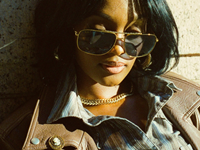The discovery is notable not only for the rarity of the material, but also for its potential to reveal unknown aspects of the ancient civilizations that lived in the Caucasus.
In 2021, studies revealed that 60 different symbols were found on a book-sized tablet. The fact that 39 of these symbols do not show a direct match with other known ancient writing systems makes the discovery even more interesting. By analyzing the geological and archaeological context of the tablet, archaeologists suggest that the artifact may date to the Late Bronze Age or Early Iron Age, around the 1st millennium BC.
The Dmanisi region is vital for the study of Eurasia's early settlers, with human remains dating back 1.8 million years. This time, however, the find is less about the physical anthropology of the region and more about a possible writing system that could provide information about the cultural, religious and social structures of ancient peoples.
Lake Bashplemi and Archaeological Finds
Lake Bashplemi is located on a volcanic plateau surrounded by hills and fed by small tributaries of the Mashavera River. Although the area has not been extensively explored archaeologically so far, ceramic shards, a mortar and obsidian remains have been discovered on the surface. These findings suggest that there may have been considerable human activity in the area.
The basalt tablet consists of 39 different symbols distributed in seven horizontal rows. The symbols are repetitive and a total of 60 characters have been recorded. The arrangement of the symbols and the repetition of some signs suggest that they may have been used to represent numbers or for punctuation. Researchers think that this writing system may have been developed to store information such as religious offerings, building records or military inventories. However, these assessments are still preliminary.
Inscription Creation Techniques and Importance
In the creation of these symbols, the ancient craftsmen first sketched the symbols with conical-tipped drills, then elaborated and refined the marks with round-tipped tools. Such precise craftsmanship in hard basalt stone suggests a high level of skill and an advanced carving technique.
One of the remarkable aspects of the inscription is its partial similarity to various ancient writing systems. Archaeologists have made graphical connections with early Georgian scripts and pre-Christian inscriptions in the region. In addition, some of the symbols bear a visual resemblance to Near Eastern writing systems such as Phoenician, Aramaic and Proto-Sinaitic. This raises the possibility of cultural interaction or information exchange with surrounding civilizations.
However, the Bashplemi inscription does not appear to be a direct copy of any known writing system. The fact that the symbols show only partial similarities with systems seen on Semitic, Greek, Indian and Georgian Bronze and Early Iron Age seals supports the idea that the inscription could be a completely independent system or a locally developed proto-script.
A New Perspective for the Cultural History of the Caucasus
This sign system adds new depth to the cultural history of the Caucasus, a region at the crossroads of Asia and Europe. Ancient Greek writers, notably Apollonius of Rhodes, referred to writing in the Colchis region, part of western Georgia, and called it “golden writing”. However, until now, there has been no concrete archaeological evidence to support such writing systems.
This discovery raises the possibility that other writing systems may have existed in the Caucasus during the Bronze Age. The fact that more examples of the scripts have not survived can probably be explained by the use of organic and perishable materials such as wood or leather and the inability to preserve these materials due to the humid climate of the region.
Efforts to Verify the Authenticity of the Inscription
Detailed analysis of the tablet revealed important results in terms of both material and inscription techniques. The geological composition of the basalt used is compatible with the local rocks in the region, indicating that the tablet was produced locally. In addition, the abrasion marks on the basalt surface caused by interventions with metal tools bear the traces of local people who tried to clean the artifact without knowing its importance, which strengthens the authenticity of the tablet.
The process of carving the inscription requires great technical skill and complex craftsmanship, making it highly unlikely that the tablet is a modern forgery. To verify the authenticity of the inscription, archaeologists are relying on the archaeological context and similarities with pre-Christian signs found earlier in the region.
Source: arKeofili.com


 Nielawore
Nielawore










Yorum yazmak için lütfen giriş yapınız